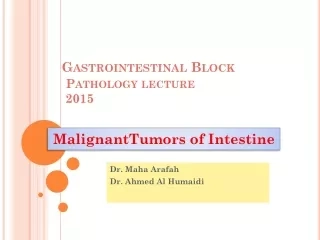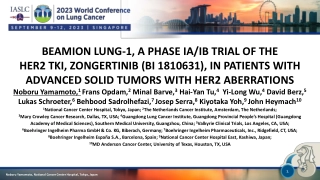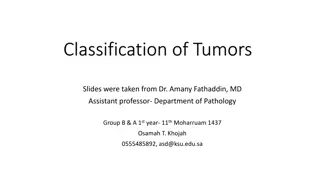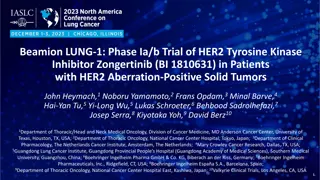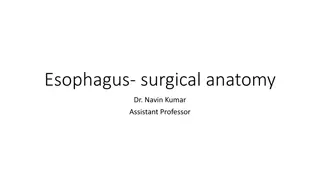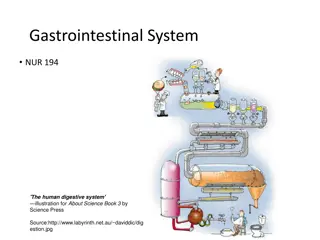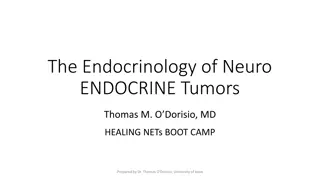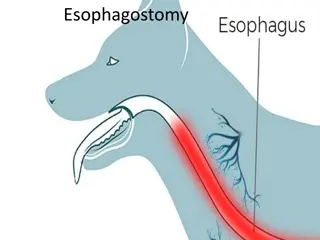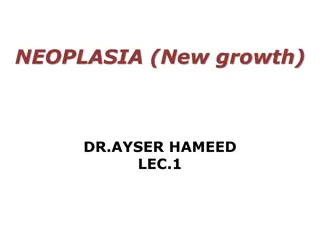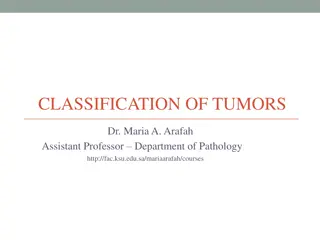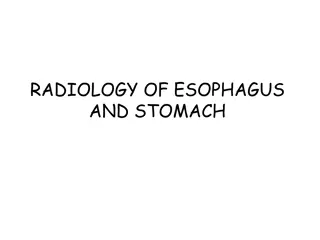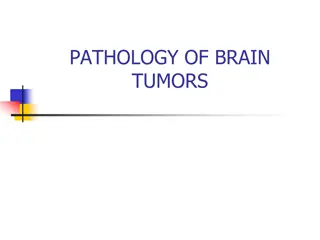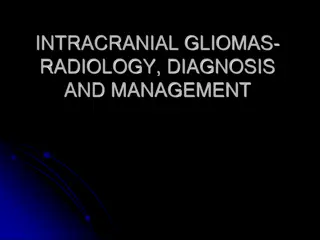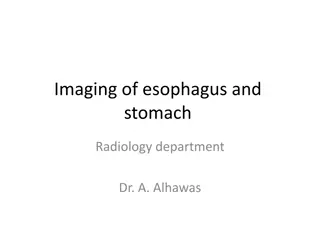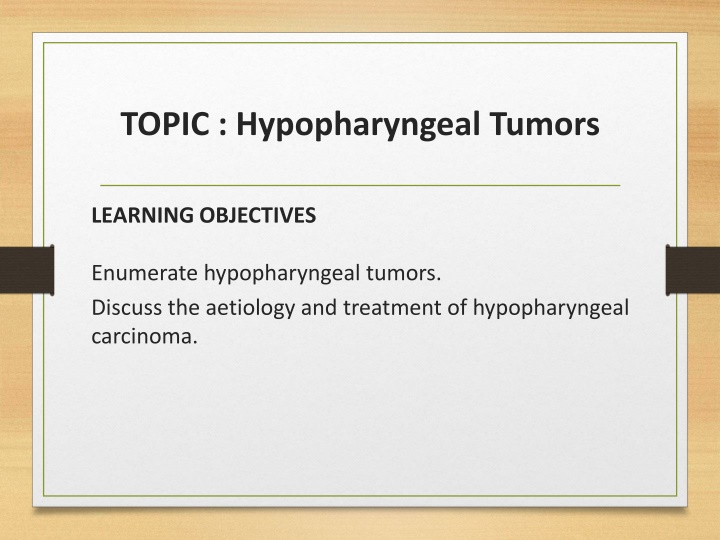
Hypopharyngeal Tumors: A Comprehensive Overview
Explore different types of hypopharyngeal tumors, their aetiology, and treatment options, focusing on hypopharyngeal carcinoma incidence, causes, and metastasis patterns. Learn about the role of smoking, alcohol, HPV, and occupational exposures in the development of these tumors.
Download Presentation

Please find below an Image/Link to download the presentation.
The content on the website is provided AS IS for your information and personal use only. It may not be sold, licensed, or shared on other websites without obtaining consent from the author. If you encounter any issues during the download, it is possible that the publisher has removed the file from their server.
You are allowed to download the files provided on this website for personal or commercial use, subject to the condition that they are used lawfully. All files are the property of their respective owners.
The content on the website is provided AS IS for your information and personal use only. It may not be sold, licensed, or shared on other websites without obtaining consent from the author.
E N D
Presentation Transcript
TOPIC : Hypopharyngeal Tumors LEARNING OBJECTIVES Enumerate hypopharyngeal tumors. Discuss the aetiology and treatment of hypopharyngeal carcinoma.
Tumors of the hypopharynx By Prof. Dr. Iftikhar Ahmad
Benign tumors a) Papilloma b) Adenoma c) Lipoma d) Fibroma e) Leiomyoma
Malignant tumors Most of the tumours are squamous cell type with various grades of differentiation INCIDENCE: a) Pyriform sinus (60%) b) Post cricoid region (30%) c) Posterior pharyngeal wall (10%)
Aetiology of Malignant tumors Smoking tobacco. Chewing tobacco. Heavy alcohol use. Eating a diet without enough nutrients. Having Plummer-Vinson syndrome. There is a significant association with alcohol and smoking, acting synergistically
Aetiology The human papilloma virus (HPV) is a contributing factor to carcinogenesis in head and neck squamous cell carcinomas. Occupational exposures mainly asbestos and welding fumes.
Carcinoma pyriform sinus Mostly affects male above 40 years of age Growth is either Exophytic, ulcerative or deeply infiltrative Because of large size of pyriform sinus, growth of this region remain asymptomatic for long time Metastatic neck nodes is the most common presenting symptom
A large right piriform fossa carcinoma
Carcinoma pyriform sinus Spread Local Spread: Upwards: vallecula and base of tongue Downwards: post cricoid region Medially: Aryepiglottic fold and ventricle of Larynx Laterally: thyroid cartilage, thyroid gland and may present as soft tissue mass in neck Lymphatic spread: upper and middle group of jugular cervical nodes Distant metastasis: occur late and may be seen in lung, liver,bone
Carcinoma pyriform sinus Clinical features Metastatic neck nodes may be the first sign Sticking/pricking sensation in throat Referred otalgia Odynophagia Dysphagia Hoarseness of voice Stridor
Carcinoma pyriform sinus Diagnosis Indirect laryngoscopy Barium swallow Flexible nasopharyngoscopy CT scan: helpful to evaluate the extent of growth and status of nodes Direct laryngoscopy and biopsy
Carcinoma pyriform sinus Treatment Early small growth without nodes in neck radiotherapy (preserves voice) Larger Growth limited to pyriform fossa & does not extend to post cricoid region total laryngectomy and partial pharyngectomy and pharyngeal reconstruction, often combined with neck dissection
Carcinoma pyriform sinus Treatment Growth extending to post cricoid region total laryngopharyngectomy with neck dissection. Pharyngo-oesophageal segment is reconstructed with local myocutaneous flap or gastric pull up to neck. Post operative radiotherapy can be given routinely to all cases.
Carcinoma post cricoid region Constitutes 30% of hypopharyngeal tumours Plummer-Vinson syndrome is an important etiological factor (seen in 1/3rd ofpatients)
Carcinoma post cricoid region Clinical features Females are usually affected in the age group of 20-40 Progressive dysphagia (predominant presenting symptom) Voice change Weight loss
Carcinoma post cricoid region Spread Local spread to cervical oesophagus, arytenoids, Recurrent laryngeal nerve and cricoarytenoid joint Lymphatic spread to paratracheal nodes, may be bilateral due to midline nature of lesion
Carcinoma post cricoid region Diagnosis Laryngeal crepitus will be lost Indirect laryngoscopy Lateral soft tissue neck x-ray Barium swallow CT scan Direct laryngoscopy and biopsy
Carcinoma post cricoid region Treatment Prognosis is poor both with irradiation and surgical treatment Radiotherapy: advantage is that it preserves laryngeal function Surgery: laryngo-pharyngo-oesophagectomy with gastric pull up or colon transposition to neck for reconstruction
Carcinoma posterior pharyngeal wall Least common hypopharyngealmalignancy Mostly seen in males above 50 years of age Clinical features Dysphagia Metastatic neck node Local Spread: prevertebral fascia, muscles and vertebrae Lymphatic spread: usually bilateral, retropharyngeal and deep cervical nodes involved
Carcinoma posterior pharyngeal wall Diagnosis Indirect laryngoscopy Lateral soft tissue neck x-ray CT scan Direct laryngoscopy and biopsy
Carcinoma posterior pharyngeal wall Treatment Early small lesions: radiotherapy with preservation of laryngeal function Or excised surgically by lateral pharyngotomy approach and primary repair with equally good result Advanced lesions: laryngopharyngectomy with blockdissection of Neck nodes and repair of the food channel.
TOPIC : Tumors of Esophagus. LEARNING OBJECTIVES Classify esophageal tumors & describe the etiology, clinical features and treatment options.
Esophageal neoplasms
Benign esophageal tumors Rare condition Types: I. Leiomyoma (commonest) II. Fibro-vascular polyp III. Squamous papilloma > 50% are asymptomatic Endoscopic / thoracotomy excision for dysphagia
Esophageal malignancy Squamous cell carcinoma (upper 2/3rd) Adenocarcinoma (lower 1/3rd) Spindle cell carcinoma Leiomyosarcoma Lymphoma Metastasis
Risk factors for Malignancy Smoking Alcohol consumption Betel nut chewing Tobacco chewing Vitamin A deficiency Vitamin C deficiency Barret s esophagus Achalasia cardia Corrosive stricture Human Papilloma Virus Plummer Vinson syndrome Tylosis (familial hyperkeratosis of palms & soles)
Clinical features of Malignancy Progressive, painless dysphagia for solid foods Acute food bolus obstruction in advanced cases Weight loss in late stages Chest pain or hoarseness: due to mediastinal invasion Coughing after swallowing, pneumonia & pleural effusion: due to formation of tracheo-esophageal fistula Cervical lymphadenopathy: due to nodal metastasis
Investigations 1. Barium swallow: a. Shouldering sign due to malignant ulcer with everted margins b. Rat tail appearance: narrow distal part c. The barium issue excentrically. 2. Esophagoscopy & biopsy from growth 3. CT scan chest: for staging of malignancy
Shouldering Sign The barium issue excentrically
Rat tail appearance The barium issue excentrically
Definitive Treatment of Malignancy Ca Upper 1/3rd: Early cases : radical radiotherapy (5500 centigrey (cGy) Advanced cases: chemo-radiation Ca Middle 1/3rd: Early cases: radical RadioTherapy or radical surgery ( esophagectomy) Advanced cases: radical surgery ( esophagectomy) + ChemoTherapy Ca Lower 1/3rd: Earlycases: radical surgery ( esophagectomy + gastrectomy ) Advanced cases: radical surgery : ( esophagectomy + gastrectomy ) + ChemoTherapy
Treatment of Malignancy Reconstructive surgery: reconstruction with gastric / jejunal flap Chemotherapy (CT): Cisplatin + 5-fluorouracil (5-FU)
Palliative treatment for Malignancy 70% patients have advanced disease at presentation & require palliative treatment 1. Endoscopic tumour ablation using laser 2. Low dose intra-cavitary radiotherapy 3. Indwelling feeding tube (Mousseau-Barbin, Celestin) 4. Feeding jejunostomy 5. Chemotherapy (5 Fluorouracil) 6. Nutritional support 7. Analgesia with morphine

